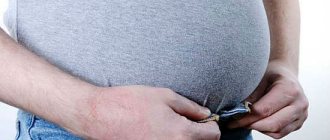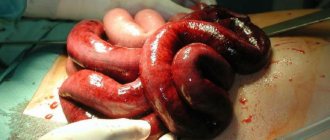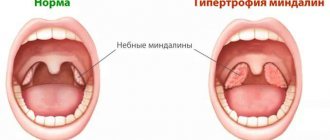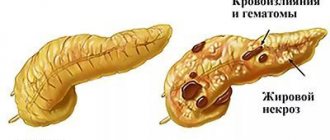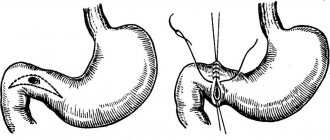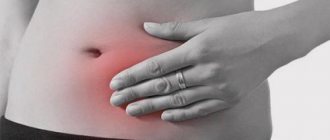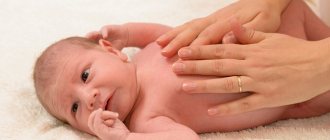The appearance of gastroptosis, which is popularly called a torn stomach, is congenital or acquired. The condition is caused by excessive exercise or poor nutrition. Ignoring symptoms leads to disruption of the gastrointestinal tract. At different stages, the disease has special manifestations. It is important to take a comprehensive approach to therapy, playing sports, eating right and using medicinal decoctions.
What does it mean to tear or rip your stomach?
When they say that the abdomen is torn, they mean excessive tension in the muscle fibers. This condition occurs when a lot of pressure is applied to the muscles of the anterior abdominal wall. In this case, intra-abdominal pressure increases significantly. You can also hear the expression, your stomach was ripped off. Torn and torn are somewhat different concepts.
When the stomach is torn, we are talking about a significant weakening of the abdominal muscles. This condition is accompanied by complications such as prolapse of internal organs, umbilical and inguinal hernia. In this case, the muscle tissue is exposed to great force and pressure quite often.
Causes of the pathological condition
There are quite a few reasons for the occurrence of abdominal tearing and breakdown. All of them are associated with an increase in intra-abdominal pressure and a sharp change in the position of the muscles of the anterior abdominal wall.
The most common causes of this pathological condition are:
- Heavy sports activities
- Frequent lifting of heavy objects (people of such professions are at risk: loader, miner, track fitter and others),
- A sharp turn and movement of the body when playing sports or during a sports game,
- Conducting a workout without proper preparation of muscle tissue (lack of warm-up),
- Intense paroxysmal cough. With coughing shocks, intra-abdominal pressure increases significantly. Cough often causes abdominal pain in children. This is due to the weakness of their abs,
- Sudden change in body weight. In this case, muscle tissue does not have time to adapt to changing conditions,
- Recent surgical treatment in the abdominal wall (appendicitis, peritonitis, etc.),
- Chronic constipation,
- Injuries in the abdominal area , which can occur under various circumstances. In this case, inflammation and damage to muscle fibers may occur.
Spool displacement (navel)
What is this spool in the stomach? The spool (navel) is a formation in the center of the umbilical fossa, which can be easily felt during palpation. It is formed from the umbilical cord, which is cut after the birth of the child.
Under certain conditions, the spool may move in different directions.
The causes of navel displacement include:
- Blunt trauma to the abdomen (such as a blow),
- Lifting heavy objects with poor technique,
- Surgical treatment of abdominal organs,
- Nervous tension and frequent stress,
- Childbirth.
Nadezhda belly
Abdominal swelling - this concept characterizes the symptoms of prolapse of the internal organs of the abdominal cavity. This condition can occur in both men and women.
The reasons for its occurrence can be divided into 2 groups:
- Difficult childbirth for women. In this case, the muscular framework (abs, pelvic floor muscles) weakens, which leads to a gradual prolapse of the internal organs,
- Heavy physical work involving heavy lifting.
This pathology is the cause of many diseases that can be eliminated by eliminating the root cause.
Why is my stomach upset?
Causes of an undermined (prolapsed) stomach:
- features of the anatomical structure;
- wrong diet;
- organ overstrain;
- pain from overstraining the abdominal muscles when lifting weights;
- a sharp decrease in body weight;
- surgery, removal of tumors in the abdominal area;
- reaction to the removal of effusion fluid that accumulates in the organ;
- postpartum consequences (large fetus, difficult birth);
- reaction to starvation and lack of protein in the body;
- unhealthy diet, junk food, overeating;
- stale food;
- abuse of carbonated drinks.
You can upset your stomach during training or by consuming low-quality food and drinks. Lifting something heavy leads to tearing of the smooth muscles and ligaments of the abdomen, which provokes a decrease in tone and a change in the position of the organ. Displacement of the stomach is caused by internal pathologies of the digestive system.
Signs of a torn and torn abdomen
How can you tell if your stomach is torn? If a person has torn or torn his stomach, then he will develop corresponding pathological signs. Knowing them, you can suspect this pathology and begin treatment.
Symptoms of a tear and torn abdomen in women and men :
- Pain in the lower abdomen . The nature of the pain can be different: shingles, paroxysmal, shooting. In some cases, the pain is so intense and prolonged that the person cannot take a deep breath and straighten up,
- Hematomas on the abdominal wall,
- Bloating. When the spool is displaced, there is increased gas formation, rumbling in the navel area,
- Press tension,
- Displacement of the navel provokes the development of various pathologies of the abdominal organs with corresponding symptoms: cholecystitis, gastritis and gastric ulcers, cholelithiasis, pancreatitis, diabetes mellitus,
- Swelling, which is noted in the lower abdomen,
- Motor activity is reduced due to pain.
There are also a number of additional signs that do not always appear:
- General hyperthermia (increased body temperature). Observed in severe cases, when acute inflammation of organs occurs against the background of prolapse,
- The presence of blood in the stool is observed when the intestines are involved in the pathological process,
- Darkening of the umbilical ring.
It should also be noted that there are specific symptoms in men and women.
Among women
In representatives of the fair half of humanity, a tear in the abdomen is manifested by pathologies of the internal genital organs.
Symptoms that a woman has torn her stomach from the internal genital organs:
- Prolapse of the uterus. Often occurs when the spool is displaced towards the uterus. In this case, urinary incontinence occurs,
- Infertility develops when the nutrition of the uterus and the functions of the appendages are disrupted, and its downward displacement is observed,
- Miscarriages and miscarriage are associated with insufficient nutrition of the uterus, when the fetus cannot securely attach to the inner lining (endometrium).
In men
The development of an inguinal hernia may be a symptom that a man has torn or torn his stomach. In this case, a hernial protrusion in the inguinal fold is observed.
Prolapse of internal organs can provoke the development of problems in the male genital area:
- Prostatitis is inflammation of the prostate gland. This causes pain in the groin and pubic area, as well as when urinating. Frequent and difficult urination,
- Erectile dysfunction (impotence).
The child has
The younger the child, the greater the likelihood of developing abdominal tears. This is due to the physiological characteristics of muscle tissue in children.
Symptoms if a child has torn his stomach are as follows:
- Constipation with accumulation of gases in the intestines,
- Decreased or complete absence of appetite,
- The child becomes lethargic, capricious,
- Sleep disturbance,
- Stomach ache,
- Development of an umbilical or inguinal hernia. When it is pinched, acute pain occurs and areas of soft tissue necrosis occur.
First aid to the victim
What to do if a person tore his stomach? It is necessary to provide him with assistance, after which he must be taken to the hospital.
First aid is not complicated and includes several points:
- Create peace for the victim. It is necessary to lay the person on his back on a flat, hard surface. To relax the muscles, you need to bend your legs at the knees and hip joints,
- Apply a bandage using a wide cloth (not less than 25 and not more than 30 centimeters wide). You need to start bandaging from the groin towards the diaphragm. The bandage should not put too much pressure on the abdominal cavity, so as not to aggravate the condition,
- Apply cold to the sore spot.
The use of painkillers is not recommended, as this may blur the clinical picture.
The patient must be taken to the surgical department; for this, an ambulance should be called.
Diagnostic methods
The doctor palpates the patient's abdomen to establish an accurate clinical picture.
To determine the exact clinical picture of a prolapsed stomach, the doctor conducts a visual examination, palpation and questioning of the patient. Next, a hydrochloric acid test and a gastric juice test are prescribed to diagnose achlorhydria (deficiency). To determine the contours of the organ, curvature and depth, as well as the degree of subsidence, fluoroscopy is performed using contrast. Then esophagogastroduodenoscopy of the gastrointestinal tract and fibroesophagogastroduodenoscopy are performed.
Treatment of pathology
Treatment depends on the severity of the pathology and the type of injury. If a person exhibits symptoms that he has torn his stomach, then consultation with a surgeon is necessary. If the muscle damage is minor, then treatment is carried out on an outpatient basis (at home).
If a hernia occurs, it is strangulated, or muscle tissue ruptures, surgical treatment is indicated.
Conservative treatment of abdominal tear:
- Using a bandage to fix muscles and reduce pain, it is also a preventive measure for prolapse of internal organs. The bandage must be worn while lying on a flat surface,
- Use of painkillers for severe pain
- Anti-inflammatory therapy,
- Compliance with the protective regime : refrain from lifting heavy objects, do not make sudden movements or bends, smooth, gradual rise from a horizontal position,
- The food is correct and complete.
Surgery:
- Restoring the integrity of muscle tissue,
- Plastic surgery for hernial protrusion.
In the postoperative period, it is necessary to wear a bandage, avoid increased intra-abdominal pressure (strong laughter, carrying heavy objects, constipation), and follow the recommendations given by the attending surgeon.
Spool (navel) in the abdomen
If the spool is displaced, it must be replaced. However, this is not so easy to do. This procedure must be performed by a trained person.
You cannot put the spool in place on your own, as this can lead to displacement and prolapse of the abdominal and pelvic organs.
You can put the spool in place using a massage or a jar:
- Treatment with massage. At the same time, the skin of the abdomen and the massage therapist’s hands are soaped. Circular movements are performed throughout the abdomen. At first the circles are large (under the ribs and above the pubis), but gradually the circle becomes smaller and forms around the navel. This method is painless,
- Treatment with a cup. The abdomen is lubricated with vegetable oil and with massage movements they try to put the navel in place. After that, a circle of potatoes is placed on the navel, wrapped in a cloth, the ends of which stick out (they must be moistened with alcohol). The ends are set on fire and a jar is placed on the navel. Keep the jar for 10 minutes, after which it is carefully removed. Check that the spool is in the correct place.
Belly edit
Editing is carried out with the patient lying on his back in a relaxed state.
Reduction of hernias and tears should only be performed with the appropriate knowledge and skills.
The masseur lubricates his hands with cream to improve gliding. Reduction is carried out using gentle massage movements. You cannot press or pull down too hard, as this can lead to strangulation of the hernia, as well as prolapse of organs.
An air hernia (air in the hernial sac) is reduced using a spiral motion.
Traditional methods
What to do if your stomach is torn or torn? You can use folk recipes. But this can only be done with slight damage to the muscle fibers.
Traditional methods of treatment:
- Warming up with clay. It is necessary to make a cake from red clay, which is heated, wrapped in cloth and applied to the sore spot until it cools and dries,
- In the first days, cooled cabbage leaves are applied to the affected area,
- Wrap the salt in a cloth. Moisten the resulting bag and apply it to the sore spot.
Treatment: what to do about the disease?
A prolapsed organ should be treated comprehensively. Prescribed:
- diet;
- physical therapy complex;
- traditional methods of therapy.
Synthetic medications are prescribed by a gastroenterologist, based on the diagnostic results and the general condition of the patient. The doctor prescribes the drug, dosage and regimen. The method of getting rid of pathology is based on the reasons for its occurrence. It is not the symptom of the disease that should be eliminated, but the factors that provoke it. Comprehensive therapy with proper nutrition and exercise is used. Treatment with recipes “from your grandmother” will help reduce symptoms and speed up the recovery process, but they cannot overcome the decrease in muscle tone on their own.
Principles of nutrition
With this pathology, it is recommended to exclude white bread from the diet.
There is no special diet for this pathology. It is important to eat food in small portions, but at least 5 times a day, avoiding overeating. The maximum interval between meals is 4 hours. It is necessary to exclude spicy dishes, white bread, semolina porridge, fatty and fried foods. You should avoid cocoa, baked goods and rice. The menu is enriched with fruits and vegetables to give the body the necessary amount of vitamins and easily digestible minerals. The first hour after eating, physical activity is contraindicated. It is recommended to eat bran bread, cereal porridge and lactic acid dishes.
Physiotherapy
Bed rest and lack of exercise can only make the situation worse. All loads should be moderate, correctly distributed and agreed upon with the doctor. Exercises are performed in a supine position, with limbs extended. Take deep exhalations and inhalations, while the air must be pushed out by the abdominal muscles - 10 repetitions. It is recommended to alternately raise the outstretched legs 5 times each. You can imitate riding a bicycle and do arm raises. Useful exercise: take a deep breath, exhale, press the right leg to the chest, exhale - lower it. This is done 5 approaches for each leg. All movements should be smooth, avoiding jerking and pain.
Traditional methods of therapy
With the help of tinctures of wormwood, chicory, yarrow, calamus or centaury, appetite is regulated. To do this, pour 25 g of dry herbs into a glass of boiling water and leave for half an hour. You need to drink 25 ml of the tincture every 30 minutes. before meals. Secretory function is normalized with plantain decoction. 75 g of medicinal plant are poured into 0.5 liters of water and boiled over low heat. Drink 100 ml half an hour before eating. You can make clay compresses. Mix the clay with water and apply the cake to the stomach for 3 hours.
